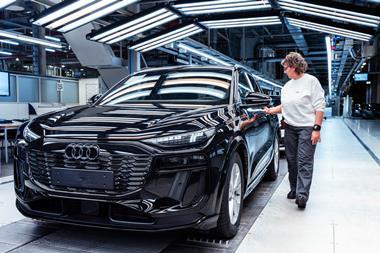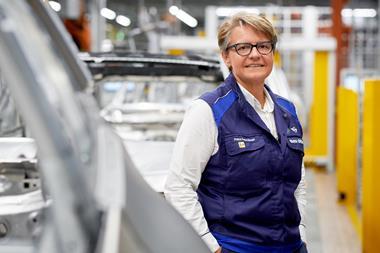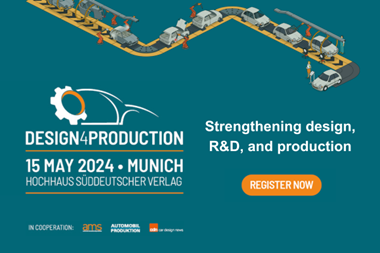
ArcelorMittal’s stronger hot-stamping grades are ideal for laser-welded blank applications, leading to further weight reductions and increased safety
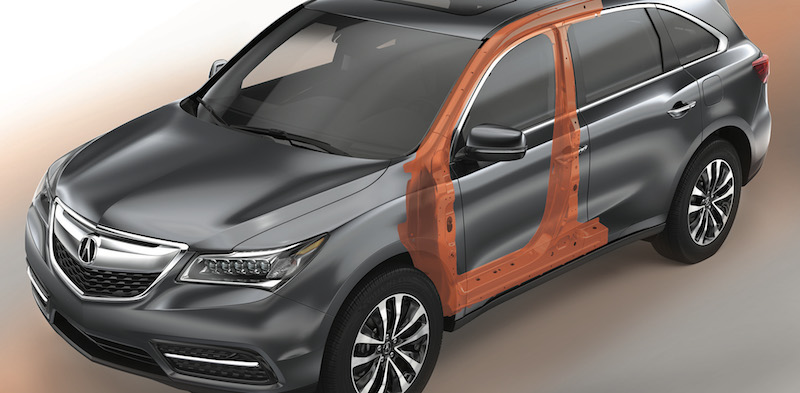 The automotive industry faces two major challenges today: emissions reduction and improvement of safety standards. Reducing vehicle weight by using lighter materials is an obvious way to cut emissions, but steel offers unbeatable crash protection. ArcelorMittal Tailored Blanks address both of these demands with one innovative solution.
The automotive industry faces two major challenges today: emissions reduction and improvement of safety standards. Reducing vehicle weight by using lighter materials is an obvious way to cut emissions, but steel offers unbeatable crash protection. ArcelorMittal Tailored Blanks address both of these demands with one innovative solution.
Laser welded blanks (LWBs) allow the use of optimal steel specifications, including ultra-high-strength steel and Usibor 1500-AS (our coated press-hardened steel with an aluminium-silicon coating). By welding steel sheets together, we produce materials that fit the needs. Strength is concentrated where it is most needed for crash resistance and overall material thickness is reduced, decreasing weight and emissions. Meanwhile, manufacturing, material and transport costs are reduced.
Very soon, ArcelorMittal will produce its innovative second generation of hot-stamping AHSS: Usibor 2000 and Ductibor 1000 – all with an aluminium-silicon coating. These stronger hot-stamping grades are ideal for LWB applications and will lead to further weight reductions, while increasing safety.
• Very high strength• Good formability• No spring back• Low residual stresses• Anti-corrosion performances Laser welded blank• Weight reduction (material and thickness at the right place)• Crash management• Material saving (nesting and thickness)• Cost-saving though material optimisation and cost reduction of tools and joining
The hot stamped door ring solution contributes to the car’s safety• Small overlap crash test• Crash side• Roll over
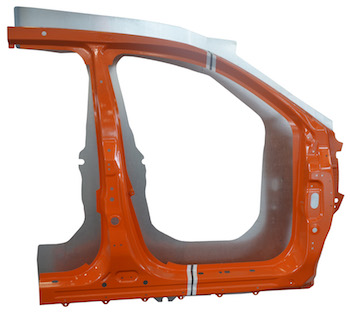
Tailored blanks can have a simple geometry with linear welds or a complex shape with non-linear welds. This type of tailored blank is used industrially for automotive body parts such as rails, floors and their cross members, body sides and inners, A, B and C pillars, rear and front wheel house fender inners, dash panels, etc. and for closures such as door inners, hood inner or tail gates and the like.
The welding of steel grades for the direct hot stamping like Usibor 1500 and Ductibor 500 requires a dedicated welding process. This includes a previous partial ablation of the weld edges, in order to remove the AlSi coating before the welding operation. Components tests like the three point bending tests with the load applied on the weld region have been performed in order to validate the ArcelorMittal process.
We observed that butt laser welding without ablation or with inappropriate ablation leads to mix of coating material (aluminium) into the molten steel and may drive eventually to fracture of the assembly.
Hot-stamped continuous door frame assemblyThe Honda 2014 Acura MDX SUV featured the automotive industry’s first hot-stamped, continuous door frame assembly. Designed by Honda and stamped from Usibor 1500 AS, the door frame assembly was almost 4kg lighter than the version employed on the previous model.
In addition to reducing the weight of the vehicle, the door frame assembly contributed to the Acura MDX’s achievement of a ‘good’ rating in the small overlap test of the US Insurance Institute for Highway Safety (IIHS).
The door frame assembly starts life at the largest integrated steelmaking operation in North America, ArcelorMittal Indiana Harbor in East Chicago, Indiana, with the production of Usibor 1500 AS. It is then shipped to ArcelorMittal Tailored Blanks in Pioneer, Ohio, where it is laser-welded to form a tailored blank.
The door frame assembly on the previous Acura MDX was made from four components spot-welded together. The use of LWBs for the 2014 model eliminated the need for these joints, improving load transfer in the components and increasing their strength. Once the finished blanks have passed a quality-control inspection, they are hot-stamped into the finished component. The reduction in weight of this part of the vehicle amounted to 20% with a limited additional cost.
This innovation was an important launching point for laser welded blanks, receiving the Automotive News Pace award in 2014, and demonstrating ArcelorMittal’s dedication to and success through co-engineering initiatives with their customers.

A world firstIn 2016, ArcelorMittal took this technology to the next level by refining the side structure of the 2017 Chrysler Pacifica. This innovation includes the world’s first five-piece hot-stamped laser-welded door ring, combined with a hot-stamped B-pillar. The door ring features five seams and two advanced steel grades. The innovation is the result of 36 months of R&D, 2,000 engineering hours and approximately 300 design iterations. It continues to demonstrate the success the company achieves through close partnerships with their customers.
Its value in improving safety standards has received formal recognition. According to the US Insurance Institute for Highway Safety (IIHS), the Pacifica is the safest minivan on the road and the only vehicle in its segment to earn the Top Safety Pick+ rating.
Reduction of the weight of a monolithic part by maintaining the same technical performances• Reduction of material use and less scrap due to nesting• Right steel grade and material thickness where needed
Increase the technical performances without increasing the weight:• Higher stiffness• Better energy absorption• Better crash behaviour• Simplification of the production process at the customer’s plant:Reduction of the number of partsReduction in the stamping and assembly tools needed
With this proof of adaptability and success, this component is positioned to serve as a best practice in the automotive industry. To make this technology accessible to our customers we have several plants around the world where we manufacture laser welded blanks.
In the NAFTA region and Europe we have a wholly owned subsidiary of ArcelorMittal Tailored Blanks, with more than 20 production sites. In Turkey and India we have joint venture. We also have a partnership in China and we are currently assessing potential joint venture partnerships in Brazil.
ArcelorMittal’s global footprint enables us to provide the same consistent quality of laser welded blank solutions, wherever our clients are located. Carmakers have one point of contact with ArcelorMittal but, thanks to our worldwide network of tailored blanks production sites, various points of delivery.
























